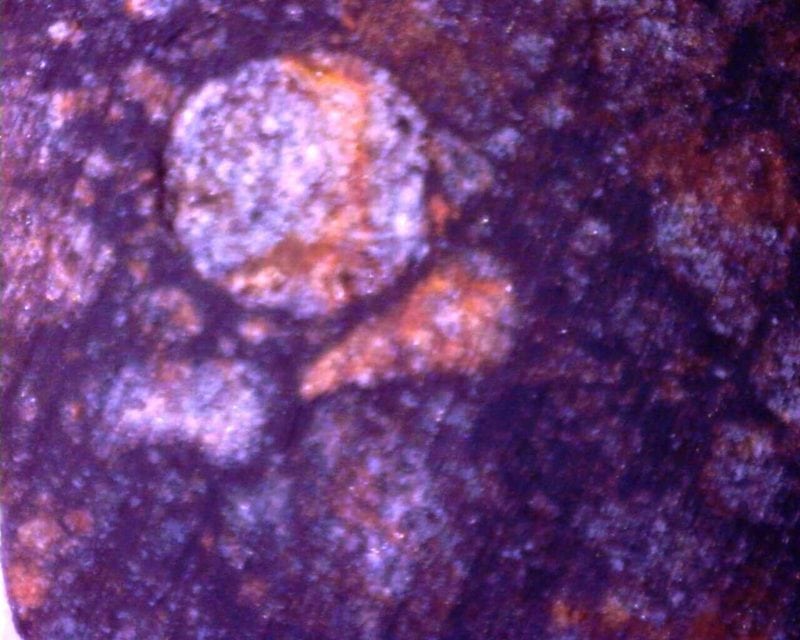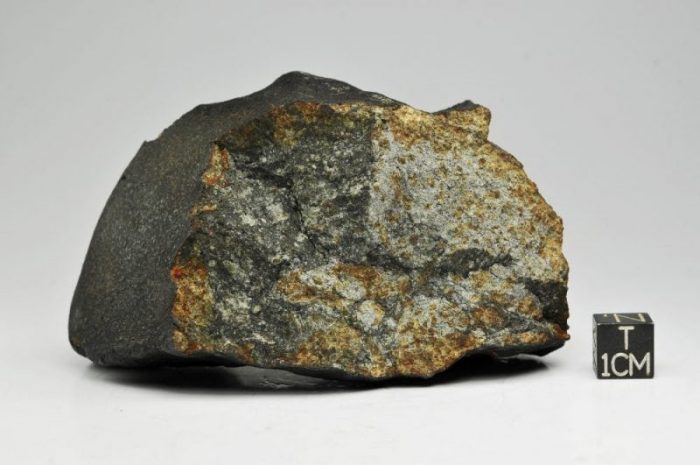
Ordinary chondrites are rocks that originate from asteroids. They are called ‘ordinary’ as they comprise about 85% of all meteorites that were found on the Earth. These rocks are however not so ordinary in terms of the information they carry. Chondrites are composed of native iron-nickel metal, sulfides and silicate chondrules that all agglomerated in the early stages of Solar System formation, they are ‘building blocks’ of planets. Planets like the Earth are composed of essentially the same material but were large enough to drive significant geological activity since the beginning. The earliest major consequence of this activity was a separation of iron-nickel metal from silicates and formation of the core, mantle, and crust.
We do not fully know how the Earth metallic core formed. Currently favored models for segregation of metal from silicates assume that during formation of planetesimals (i.e. planet embryos) enormous heat was produced via decay of short-lived radionuclides (e.g. 26Al). The heat from radiogenic decay was large enough to completely melt agglomerated minerals and then two melts separated by gravitation and density.
There are however many uncertainties about this mechanism and it is challenging to address many issues as the Earth core is, and will always be, beyond our direct access. In this aspect, ordinary chondrites are gifts that nature endowed us. Unlike the planets, the small asteroids are not considered to be sites of any significant geological activity. These bodies never grew large enough to produce enough heat for melting. Therefore ordinary chondrites are survivors and witnesses of the very early epochs of Solar System evolution.
Early Evolution Of The Pułtusk Chondrite
One of such witnesses is Pułtusk chondrite. The Pułtusk meteorite fell on 30th January 1868 in Poland. It was one of the biggest observed falls of stony meteorites with tens of thousands of fragments collected that have a total mass of almost 300 kg. When scanned with X-ray computed tomography, some fragments of the chondrite reveal the presence of voluminous, cm-sized accumulations of iron-nickel metal set in ‘normal’ chondritic rock. Although Pułtusk clearly samples an asteroid – a body which certainly escaped global, widespread melting – the metal accumulations must have formed via separation of molten metal from silicates. How could that happen and how does it help to understand the formation of the Earth core?

Fragment of Pultusk chondrite (credit: Tomasz Jakubowski)
The metal accumulations in Pułtusk form sets of veins which follow the orientation of fractures in the chondritic rock. Although the individual metal grains are quite irregular in shapes, they connect with each other and form complex three-dimensional structures. Such veins must have formed by migration of metal into open fractures. In a chondritic parent body, the only mechanism capable to form fractures is a hypervelocity collision. Can such collision account for separation of metal from silicates too?
During impact – when a rocky body is hit by another one – rock is affected by a shock wave. As a result of shock, enormous pressures and temperatures are released and affect the rock. Temperatures cause localized melting of minerals, while shock pressure triggers extremely high strains and causes instantaneous movement of particles.
When chondritic rock – a mixture of silicates and iron-nickel metal is affected by such shock process, some silicates and some metal are melted and the melt is immediately accelerated – it flows. But molten metal and silicates do not mix well with each other and, most importantly, the two melts are accelerated differently. This is because they differ significantly in mechanical properties. Particularly, the iron-nickel melt is far less viscous than silicate melt. Therefore, when formed and accelerated in shock conditions, metallic melt flows and migrates much more easily than silicates. As a consequence, the metal melt may reach quite far distances in short time and leave silicates behind.
This is perhaps mechanism explaining how iron-nickel metallic melt separated from silicates to form veins as observed in Pułtusk. After the separation, metal intruded into discontinuities in fractured rock (e.g. in the crater basement) and cooled down.
Do these structures have anything in common with the interior of our own world? It is likely that the accumulations seen in Pułtusk chondrite are a snapshot of initial stages of metal-silicate separation. They clearly show that impact-generated deformation was an efficient means to promote local segregation of metal from silicates. Although metal accumulations are observed rarely in chondrites, they are not unique to Pułtusk. And perhaps impact-driven separation occurred in most planetesimals. Having taken into account that impact events were very frequent in the epoch of planets formation, such accumulations may have been created very commonly.
Certainly, impact solely was not sufficient to separate all volume of metal and transport it deep to the core. But, impacts may have actually been a trigger of separation. After initial, impact-driven migration of metal to enlarged accumulations, such metallic bodies were affected by gravitation and transported, due to their density, deeper into cores of growing planets.
The study, Contribution of early impact events to metal-silicate separation, thermal annealing, and volatile redistribution: Evidence in the Pułtusk H chondrite was recently published in the journal Meteoritics & Planetary Science.









